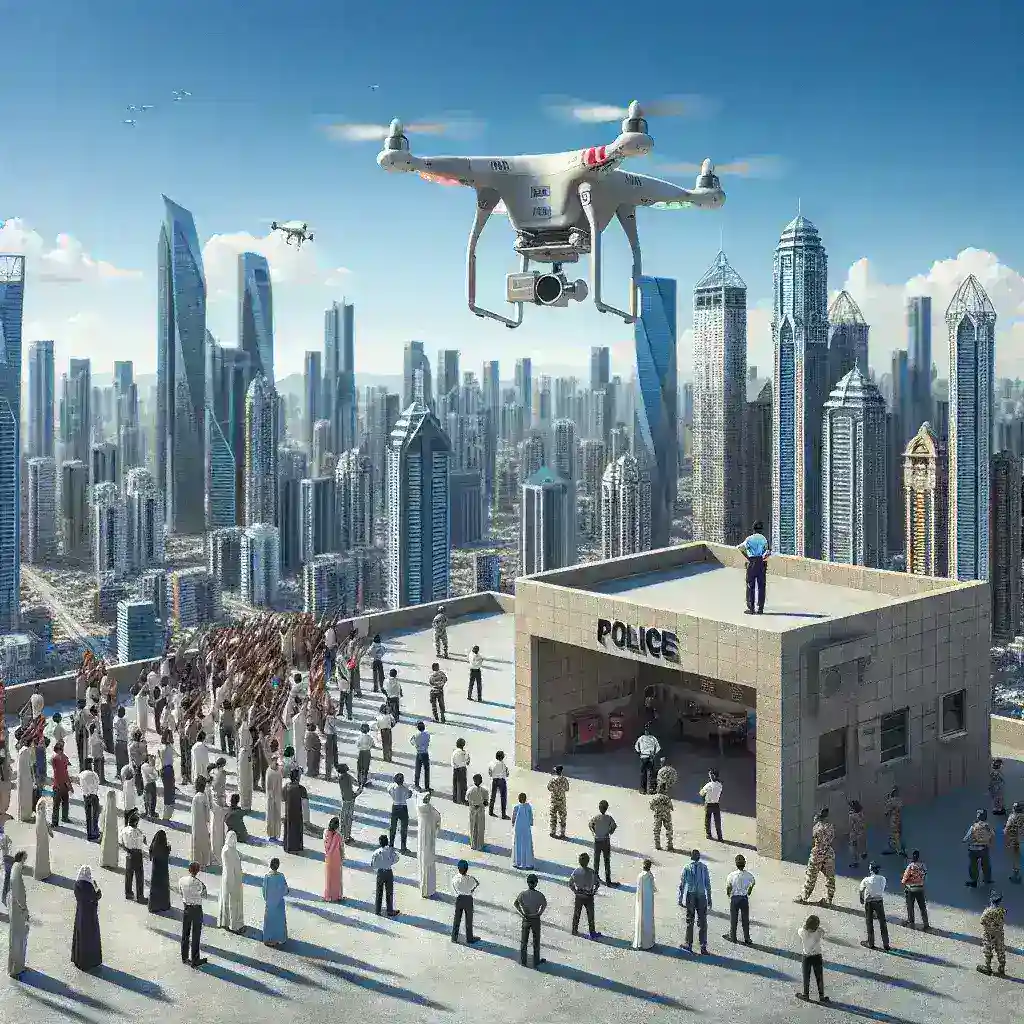City Police Innovate with Drone Mounted Loudspeakers
In a groundbreaking move to enhance public safety, city police departments across the globe are adopting drone mounted loudspeakers for emergency evacuation alerts. This innovative technology is set to transform how authorities communicate during critical situations, allowing for rapid and effective dissemination of information. In this article, we will delve into the details of this technological advancement, its historical context, benefits, potential drawbacks, and future implications.
The Historical Context of Emergency Alerts
Emergency alerts have evolved significantly over the years. From sirens and radio broadcasts to mobile alert systems, the urgency of timely communication has always been paramount. The introduction of drones equipped with loudspeakers marks a new phase in this evolution, blending aerial surveillance with immediate communication capabilities.
A Shift to Aerial Communication
The concept of using aerial devices for communication isn’t entirely new. Military applications have utilized drones for years to relay information in hostile environments. However, the adaptation of this technology for civilian use, particularly in emergency management, is a relatively recent development. As natural disasters, civil unrest, and other emergencies become increasingly prevalent, the need for effective communication strategies is more crucial than ever.
How Drone Mounted Loudspeakers Work
Drone mounted loudspeakers work by carrying lightweight audio equipment that can broadcast messages over large areas. These drones are generally equipped with GPS technology, enabling them to navigate to specific locations quickly. Once deployed, they can deliver pre-recorded messages or live announcements from police officers on the ground.
Key Features
- Real-Time Communication: Drones can provide live updates as situations unfold, keeping the public informed and safe.
- Rapid Deployment: Drones can be deployed quickly in emergencies, reaching areas that may be inaccessible due to traffic or damage.
- Wide Coverage: The aerial perspective allows for greater coverage, ensuring more people receive critical information in a timely manner.
Advantages of Using Drones for Emergency Alerts
The benefits of deploying drone mounted loudspeakers for emergency alerts are multifaceted:
- Enhanced Reach: Drones can cover extensive areas, ensuring that alerts reach as many people as possible, regardless of their location.
- Cost-Effective: In comparison to traditional methods of communication, such as setting up physical warning systems, drones offer a more cost-effective solution.
- Increased Efficiency: With the ability to deploy drones quickly, police can respond to emergencies more efficiently, potentially saving lives.
Real-World Applications
City police departments in various regions have already begun implementing this technology. For example, during recent natural disasters, drones helped convey evacuation orders and safety instructions to residents in real time, significantly improving the community’s response to emergency situations.
Challenges and Considerations
While the advantages are evident, there are also challenges associated with the deployment of drone mounted loudspeakers:
- Regulatory Hurdles: The use of drones is subject to various regulations that may limit their deployment in certain areas.
- Privacy Concerns: The use of drones can raise privacy issues among the public, necessitating a balance between safety and individual rights.
- Technical Limitations: Weather conditions and technical malfunctions could hinder drone performance, particularly in critical situations.
Expert Opinions on the Future of Drone Communication
Experts in public safety and technology predict that the use of drone mounted loudspeakers will become increasingly common in emergency response strategies. Dr. Emily Johnson, a leading researcher in emergency management, stated, “The integration of drones into public safety protocols represents a significant leap forward in our ability to communicate with the public during times of crisis. This technology not only saves time but also has the potential to save lives.”
The Future of Emergency Management
Looking ahead, the potential for drone technology in emergency response is vast. As cities continue to grow and face unique challenges, integrating aerial technology into communication strategies will likely become more prevalent. Furthermore, advancements in drone technology, such as improved battery life, enhanced audio capabilities, and better navigation systems, will further enhance their effectiveness.
Conclusion
The deployment of drone mounted loudspeakers by city police represents a significant evolution in the way emergencies are managed. By combining aerial surveillance with real-time communication, authorities can ensure that critical information is disseminated quickly and efficiently. While there are challenges to overcome, the potential benefits for public safety are immense. As technology continues to advance, we can anticipate a future where drones play an even more integral role in keeping our communities safe.

